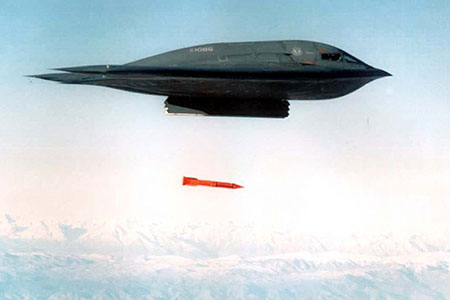The charges will be taken from old arsenals, the plumage – from the previous modification
The Pentagon announced the start of a program to create a new modification in the B61 family of thermonuclear bombs – common Cold War ammunition. The new modification should get the "lucky" index B61–13.
In recent years, the B61 has been mentioned in connection with two topics: the deployment of these American bombs at bases in Europe as part of NATO's joint nuclear missions, as well as the creation of a new controlled high–precision modification - the B61–12.
B61–13 has a lot in common with the previous version. Like the B61–12, it is going to be converted from old bombs. If the B61–12 used a charge from the B61–4 – the lightest of the family (controlled power from 300 tons to 50 kt), then the B61–13, on the contrary, will be created on the basis of the most powerful bomb in the B61–7 family (from 10 tons to 360 kt).
B61–7s were considered strategic, not tactical bombs. They are not stationed at European air bases, and strategic bombers, not fighters, were considered as their carriers. Today, their only regular carrier is the inconspicuous B-2A Spirit bombers.
The B61–13, like its predecessor, is going to be equipped with a new tail section with an inertial guidance system and a controlled tail. Its circular probable deviation will be no more than 30 m. But in the B61–12, the accuracy increase was carried out under the slogan of hitting the same target with a smaller charge with less collateral damage (in response to criticism of lowering the threshold for the use of nuclear weapons). The B61–13 has other tasks.
The B61–13 creation program is designed to achieve several goals at once:
– Re–equipment of B61–7 bombs in order to extend their service life and increase their reliability and safety (the B61-12 program was officially approved as a "life cycle extension program");
– due to the combination of high charge power with increased accuracy, the new bomb should become an effective replacement for the B83–1 as a means of hitting underground fortified targets (the B83–1 bomb with a capacity of up to 1.2 Mt has many opponents in the United States due to high maintenance costs; supporters of the preservation of the B83-1 demanded first to create a replacement for damage to underground objects).
The United States has already tried to create an "anti-bunker" bomb in the B61 family in the mid-1990s. The B61–11 bomb was equipped with a charge of slightly increased power (400 kt) and a modified body. It was supposed to be used as a classic concrete–piercing bomb - when dropped from a great height, a bomb without a parachute should be buried in the soil and undermined in the ground. Judging by the fragmentary information about the test results, the attempt was unsuccessful – the bomb, which was not originally intended for such a "treatment", could collapse with unknown consequences for the charge. But the B61–11 was put into service, released in small quantities (no more than 50 units were converted from the B61–7), which made it possible to remove from service the B53 – a morally and physically obsolete 9 Mt bomb.
Now the Pentagon plans to "repeat the maneuver", but with great success. The B61–13 should not only destroy underground structures due to high accuracy (hitting, for example, entrance groups so that the shock wave goes inside through communications), but also preserve the potential of the B61–7 strategic bomb and be operated for a long time.
The US Department of Defense and Energy (it is responsible for the nuclear industry, including the military) proposes to include the first $ 52 million of B61–13 expenditures in the budget for the 2024 fiscal year, which is being prepared for adoption, which has already begun in the US (without a budget – this happens quite often). It is important to start work before the adoption of the budget next year – then the B61–13 can be started before the closure of the B61–12 series (probably in 2025). This will make it possible not to freeze production and not to spend money on its resumption later.
Probably, the B61–13 bomb will receive support from American lawmakers: its submission is well thought out politically. The "hawks" will see in it a program of modernization of the nuclear potential. Circles negatively related to nuclear weapons will be appeased by the write–off of the B83-1, which they have been seeking for a number of years, and the promise "not to increase the number of nuclear bombs in the American arsenal." To do this, not only will charges be taken from B61–7, but even the number of B61–12 (480 units are planned) will be reduced in favor of B61–13. It looks like the new bombs will simply be given the "tails" planned for the 12th modification. The latter, apparently, will also please supporters of budget cuts. They will be able to present the program as economically profitable: upgrading or even simply continuing to operate the B83–1 may be more expensive.
But in the countries opposing the United States, the B61–13 bomb will not be met positively. Russia and China have every reason to consider it not as an abstract deterrent, but as a weapon aimed at defeating particularly important objects (and without launching a ballistic missile, from aboard an inconspicuous bomber – both the B-2A and the promising B-21A Raider will become its carrier). Of course, there are no completely invulnerable "invisibles". But it is unlikely that anyone will want to check whether they are able to "sneak up" on key objects at a time of crisis.

